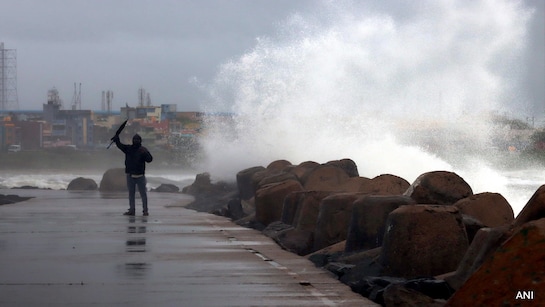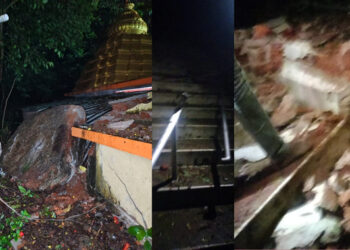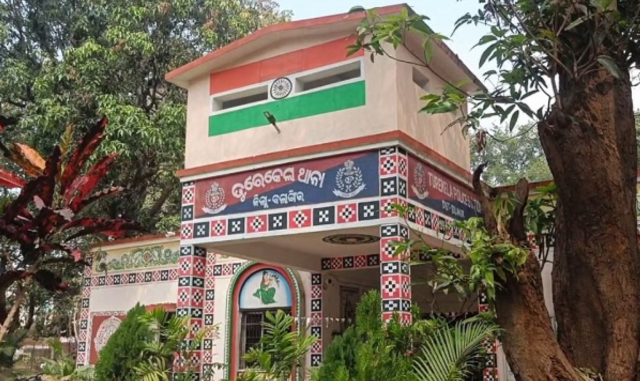Severe Cyclone Montha made landfall late Tuesday night near Narasapur, south of Kakinada, between Machilipatnam and Kalingapatnam along the Andhra Pradesh coast. According to the India Meteorological Department (IMD), the landfall process began around 11:30 pm and continued for nearly five hours, concluding at 4:30 am on Wednesday.
During the landfall, wind speeds ranged between 90–100 kmph, with gusts reaching up to 110 kmph. The cyclone brought torrential rain and strong winds, lashing several coastal districts including Machilipatnam, Kakinada, Rajahmundry, Bapatla, Kavali, Ulavapadu, and Nellore. Rough sea conditions prevailed, with high tidal waves breaching coastal areas in multiple locations.
IMD officials confirmed that Cyclone Montha crossed the coast south of Kakinada, differing from earlier forecasts that had indicated a landfall closer to Kakinada. After moving inland, the system weakened gradually while spreading widespread rainfall across interior regions of Andhra Pradesh.
Despite its severity, the cyclone did not cause extensive destruction as initially feared. As of now, no major damage has been reported from the affected districts. Authorities have maintained high alert levels, urging residents to remain cautious as heavy rainfall is expected to persist across the Andhra coast over the next 48 hours.
In Odisha, the cyclone’s impact has been relatively mild due to its altered path post-landfall. However, southern districts such as Malkangiri, Koraput, Rayagada, Gajapati, and Ganjam have witnessed moderate to heavy rainfall. In some hilly regions, landslides and uprooted trees were reported following continuous downpour, particularly in Gajapati and Malkangiri.
Authorities in Andhra Pradesh and Odisha continue to monitor the evolving situation, even as Cyclone Montha weakens further while moving northwestward inland. Disaster response teams remain on standby to ensure public safety and timely relief where needed.





























